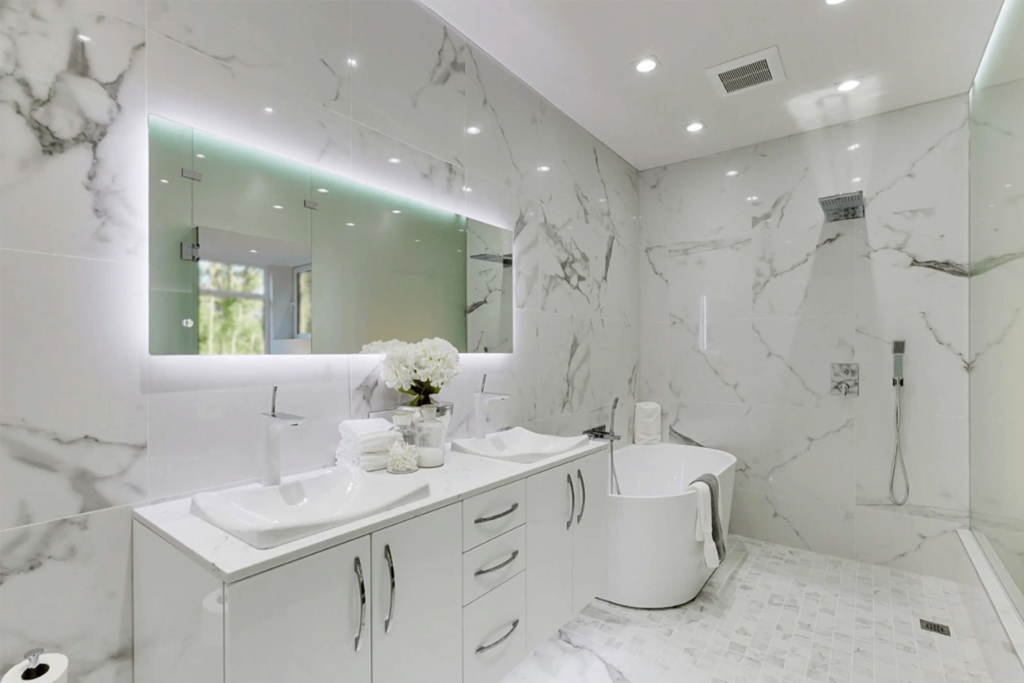
A bathroom is one of the most essential rooms in any home. It’s a place of privacy, relaxation, and rejuvenation. Whether you’re renovating an outdated space or starting from scratch in a new build, a well-executed bathroom installation can elevate the value and comfort of your home. In this comprehensive guide, we explore every aspect of bathroom installations, from initial planning and design to execution and finishing touches.
1. Planning Your Bathroom Installation
Proper planning is the foundation of a successful bathroom installation. Before any work begins, it’s crucial to define your goals and expectations.
a) Determine Your Budget
Your budget will dictate everything from the materials you choose to the professionals you hire. Be realistic and include a contingency fund (typically 10-20%) for unexpected expenses.
b) Identify Your Needs and Preferences
- Who will use the bathroom? (e.g., family, guests, children)
- Do you need a shower, bath, or both?
- Are accessibility features required?
- What style do you prefer? (modern, traditional, rustic, minimalist)
c) Measure Your Space
Accurate measurements are vital. Include ceiling height, window and door placements, plumbing locations, and any architectural features that could impact the layout.
d) Consult with Professionals
While DIY can be tempting, hiring professional plumbers, electricians, and tilers ensures safety, compliance with building codes, and high-quality results.
2. Bathroom Design and Layout
Designing a functional and beautiful bathroom layout is about balance and efficiency.
a) Floor Plan Options
Popular bathroom layouts include:
- Full bath (toilet, sink, bathtub/shower)
- Three-quarter bath (toilet, sink, shower)
- Half bath (toilet and sink only)
- En-suite (attached to a bedroom)
b) Optimal Fixtures Placement
The placement of toilets, basins, showers, and baths should prioritize usability. Avoid cramming elements and ensure there is enough space to move around.
c) Lighting Design
Lighting should be both functional and atmospheric:
- Task lighting near mirrors
- Ambient lighting for general use
- Accent lighting for aesthetics
d) Storage Solutions
Maximize space with clever storage ideas:
- Vanity units with drawers
- Wall-mounted cabinets
- Recessed shelving in shower areas
- Over-the-toilet shelves
3. Choosing Bathroom Fixtures and Materials
The right fixtures and materials bring both style and durability to your bathroom.
a) Bathtubs
Options include freestanding, built-in, corner, and whirlpool tubs. Consider material (acrylic, cast iron, stone resin) and size based on space and preferences.
b) Showers
Walk-in showers, enclosed cubicles, or wet rooms? Choose showerheads (rainfall, handheld, multi-jet) and enclosures that match your lifestyle.
c) Toilets
Wall-hung, close-coupled, or back-to-wall designs? Look for water-efficient models and consider the ease of cleaning.
d) Basins and Faucets
Pedestal, countertop, wall-mounted, or under-mount basins are popular choices. Pair with stylish and functional faucets, considering single vs. double taps, finishes, and water-saving features.
e) Flooring and Wall Coverings
Go for materials that are water-resistant and easy to clean:
- Tiles (ceramic, porcelain, natural stone)
- Vinyl or laminate flooring
- Waterproof paint or wall panels
f) Mirrors and Accessories
Mirrors enhance light and space. Accessories like towel bars, toilet roll holders, and soap dispensers should blend functionality with design.
4. Plumbing and Electrical Considerations
Both plumbing and electrical work must meet local regulations.
a) Plumbing
- Plan the layout around existing plumbing to save costs.
- Ensure proper drainage and venting.
- Install shut-off valves for all water connections.
b) Electrical Work
- All electrical installations in a bathroom must be completed by a certified electrician.
- Use moisture-rated light fittings.
- Install GFCI (Ground Fault Circuit Interrupter) outlets to prevent electric shocks.
5. Installation Process Step-by-Step
a) Demolition and Preparation
- Remove old fixtures and fittings.
- Inspect for damage, mould, or rot.
- Update plumbing and electrical lines if needed.
b) Rough-In Stage
Install new plumbing and electrical systems. Ensure everything is properly positioned according to your layout.
c) Surface Preparation
- Install plasterboard or cement backer board in wet areas.
- Apply waterproofing membranes.
- Level the floor and prepare surfaces for tiling or wall finishes.
d) Installation of Fixtures
- Install the bath, shower tray, toilet, basin, and storage units.
- Seal all joints and edges to prevent water ingress.
e) Tiling and Painting
- Apply tiles to floors and walls.
- Grout and seal tiles to prevent moisture penetration.
- Paint non-tiled areas with moisture-resistant paint.
f) Final Fix and Finishing Touches
- Install light fittings, mirrors, accessories, and doors.
- Connect taps and check for leaks.
- Clean the area and inspect the entire installation.
6. Tips for a Successful Bathroom Installation
- Choose timeless designs for long-term appeal.
- Prioritize ventilation to prevent damp.
- Use high-quality materials to reduce maintenance.
- Avoid overly trendy choices that may date quickly.
- Always test all fixtures before completing the project.
7. Common Mistakes to Avoid
- Ignoring ventilation needs
- Failing to plan adequate storage
- Underestimating costs and timescales
- DIYing complex tasks beyond your skill level
- Choosing style over function
8. Maintenance and Upkeep
Once your bathroom is installed, proper maintenance will ensure longevity:
- Regularly clean tiles and grout
- Descale showerheads and taps
- Check seals for signs of mould or wear
- Repaint walls when needed with suitable paint
Conclusion
Bathroom installations require thoughtful planning, quality materials, and skilled workmanship. Whether you’re upgrading an existing space or creating a brand-new bathroom, each decision—from layout to lighting—affects the final result. By following best practices and working with experienced professionals, you can achieve a bathroom that is not only beautiful but also practical and built to last.
